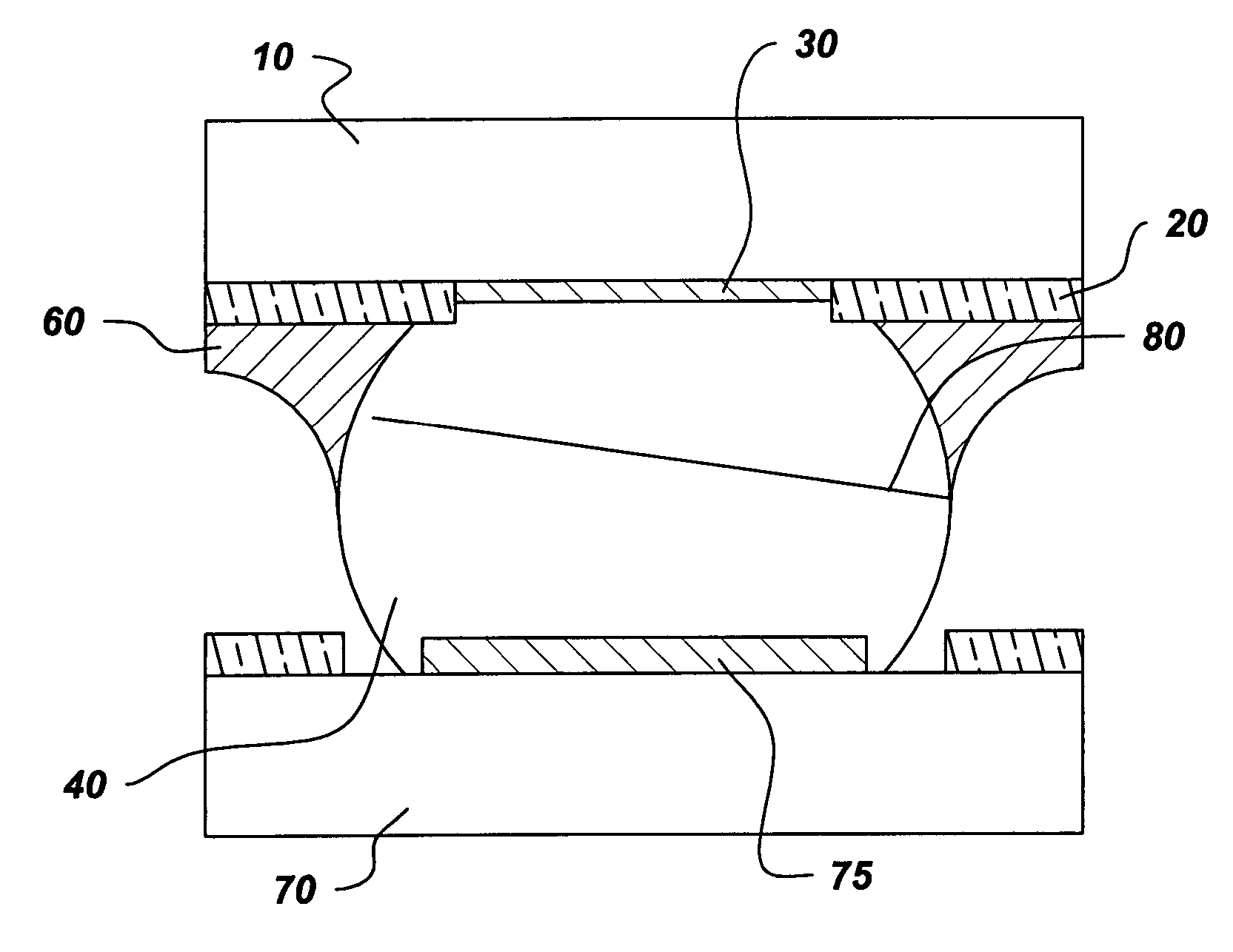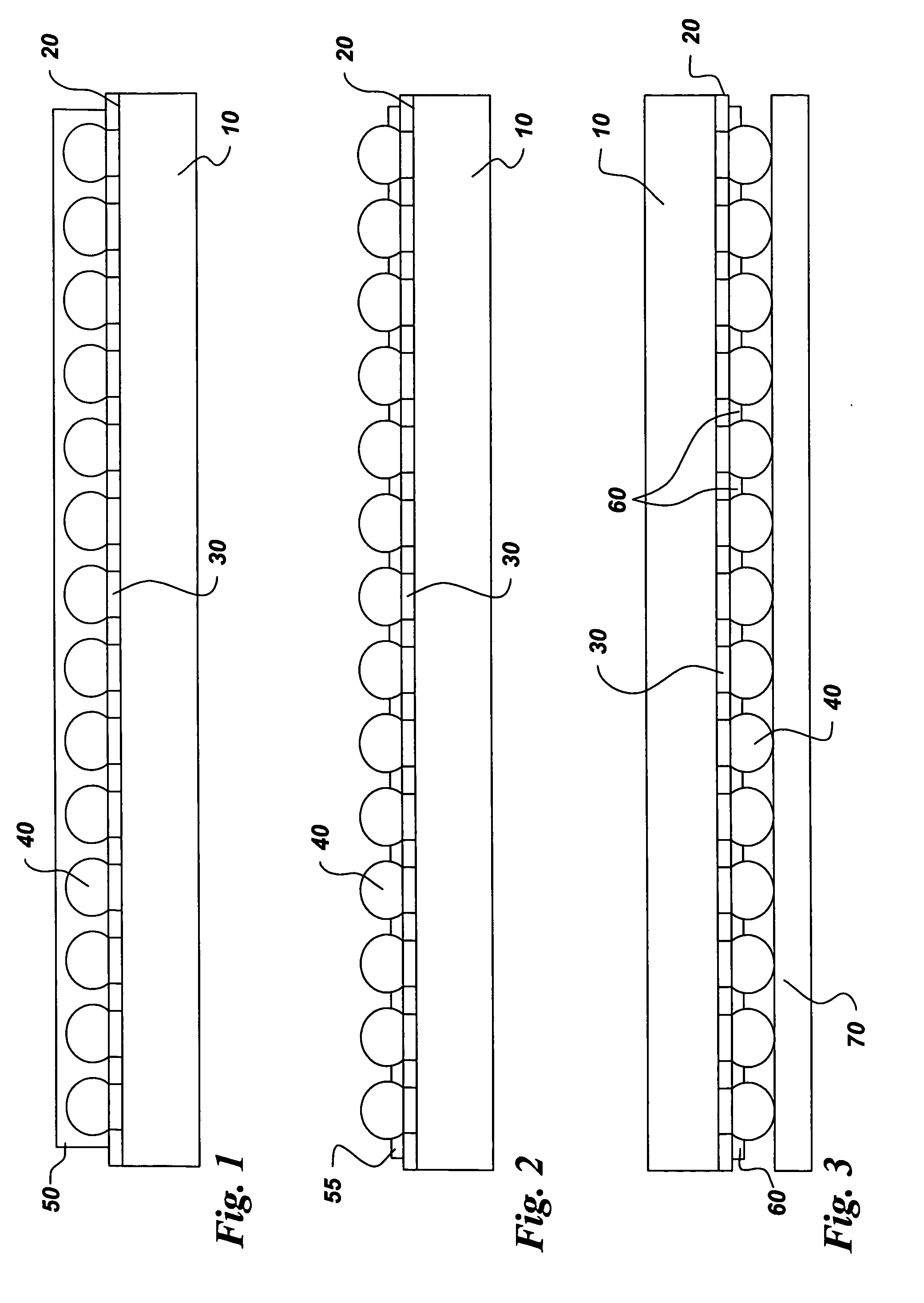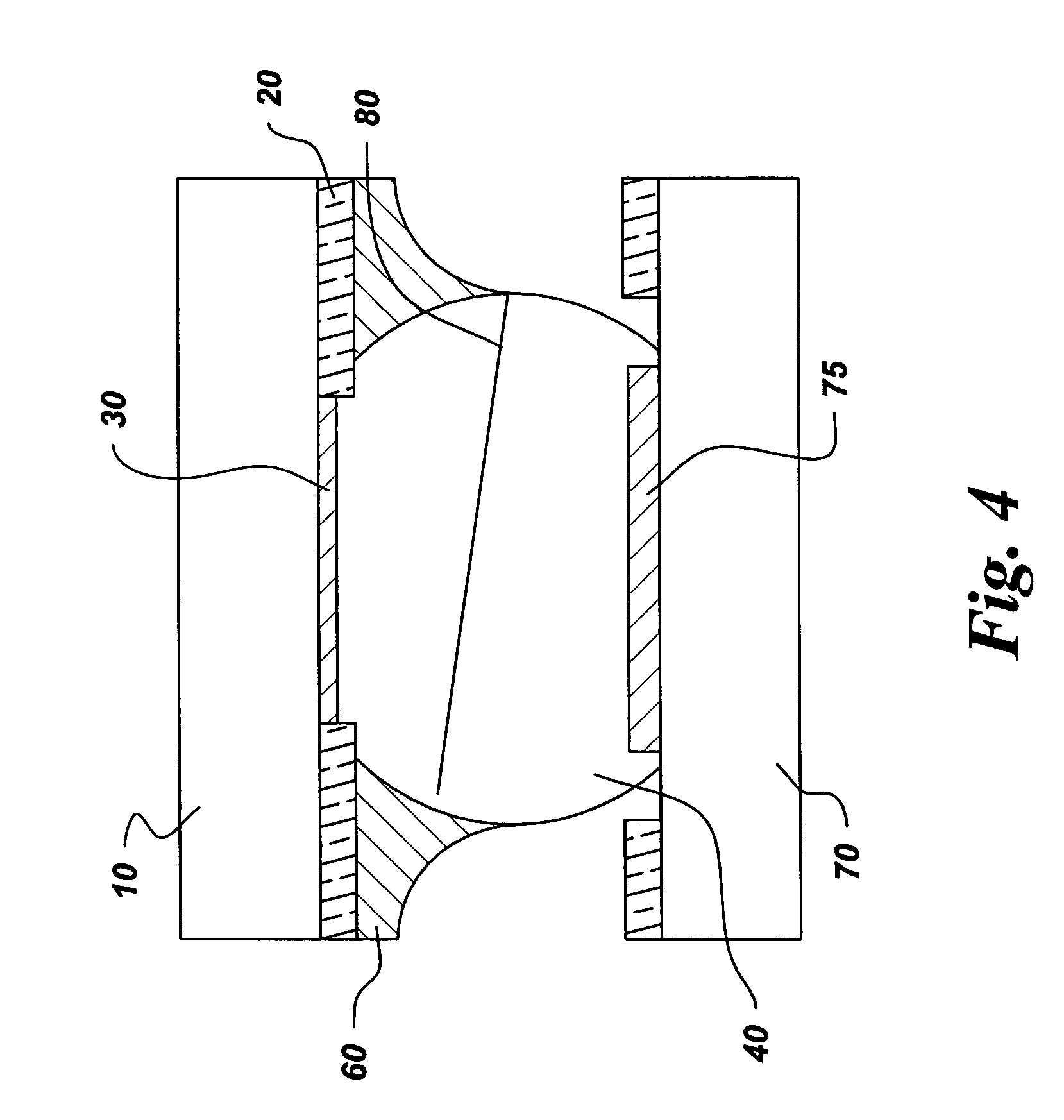Method of forming electronic devices
a technology of electronic devices and masks, applied in the direction of printed circuit aspects, sustainable manufacturing/processing, final product manufacturing, etc., can solve the problems of solder joint fatigue, solder joint almost always fails at the interface between the solder joint and the solder mask, and the stress on the solder joint that connects the device and the printed circuit board,
- Summary
- Abstract
- Description
- Claims
- Application Information
AI Technical Summary
Benefits of technology
Problems solved by technology
Method used
Image
Examples
example 1
Preparation of functionalized colloidal silica (FCS) predispersion.
[0067] A functionalized colloidal silica predispersion was prepared by combining the following: 935 grams of isopropanol (Aldrich) was slowly added by stirring to 675 grams of aqueous colloidal silica (Nalco 1034A, Nalco Chemical Company or Snowtex OL, Nissan Chemical Co.,) containing 34 weight % of 20 nanometer particles of SiO2 (Nalco 1034A) or 21 weight % of 50 nanometer SiO2 particles (Snowtex OL). Subsequently, phenyl trimethoxysilane (PTS, 58.5 grams for Nalco 1034A, 22.0 grams for Snowtex OL ), (Aldrich), which was dissolved in 100 grams isopropanol, was added to the stirred mixture. The mixture was then heated to 80° C. for 1-2 hours to afford a clear suspension. The resulting suspension of functionalized colloidal silica was stored at room temperature. Multiple dispersions based on Nalco 1034 (see Table 1), having various levels of SiO2 (from 10% to 30% by weight) were prepared for use in Example 2.
example 2
Preparation of a concentrated dispersion of functionalized colloidal silica in methoxypropanol.
[0068] A 2000 milliliter flask round bottom was charged with 540 grams of each of the pre-dispersions, prepared in Example 1. Additional pre-dispersion compositions are shown in Table 1, below. 1-methoxy-2-propanol (750 grams) was then added to each flask. The resulting dispersion of functionalized colloidal silica was vacuum stripped at 60° C. and 60 millimeter Hg to remove about 1 liter of solvents. The vacuum was slowly decreased and solvent removal continued with good agitation until the dispersion weight had reached 140 grams in the case of materials based on Nalco 1034A or 80 grams for Snowtex OL cases. The clear dispersions of phenyl-functionalized colloidal silica contained 50% by weight SiO2 and no precipitated silica. These dispersions were stable at room temperature for more than three months. The results in Table 1 show that a certain level of phenyl functionality is required...
example 3
Preparation of a dispersion of capped functionalized colloidal silica in epoxy resin.
[0069] A solution of 3.2 grams of epoxy cresol novolac (ECN 195XL-25 available from Sumitomo Chemical Co.), 1.84 grams of Epon 826 (available from Resolution Performance Products), 2.6 grams of novolac hardener (Tamanol 758 available from Arakawa Chemical Industries) in 3.0 grams of 1-methoxy-2-propanol was heated to about 50° C. A 7.12 grams portion of the solution was added, dropwise, to 10.0 grams of the FCS dispersion (see Table 1, entry #3, 50% SiO2 in methoxypropanol), by stirring at 50° C. followed by additional methoxypropanol (3.6 grams). The clear suspension was cooled and a catalyst solution of N-methylimidazole, 60 microliters of a 25% w / w solution in methoxypropanol was added by stirring.
Test procedure:
[0070] The test part used to demonstrate the reliability improvement from the polymer reinforcement system was an electronic device classified as a Wafer Level Chip Scale Package (WL...
PUM
| Property | Measurement | Unit |
|---|---|---|
| particle size | aaaaa | aaaaa |
| viscosity | aaaaa | aaaaa |
| particle size | aaaaa | aaaaa |
Abstract
Description
Claims
Application Information
 Login to View More
Login to View More - R&D
- Intellectual Property
- Life Sciences
- Materials
- Tech Scout
- Unparalleled Data Quality
- Higher Quality Content
- 60% Fewer Hallucinations
Browse by: Latest US Patents, China's latest patents, Technical Efficacy Thesaurus, Application Domain, Technology Topic, Popular Technical Reports.
© 2025 PatSnap. All rights reserved.Legal|Privacy policy|Modern Slavery Act Transparency Statement|Sitemap|About US| Contact US: help@patsnap.com



